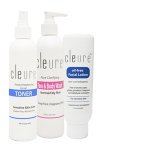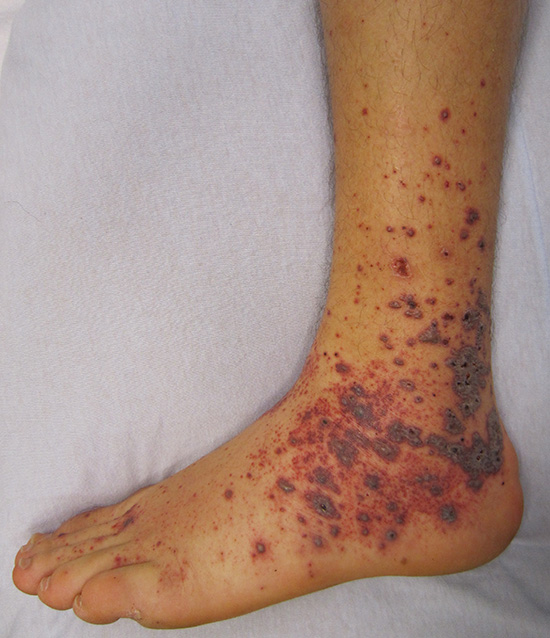Rosacea Treatment - a Review of Scientific Literature
by Victoria Swan
A significant amount of literature has been published considering the knowledge we have about Rosacea. Most publications and studies are targeting either statistical data related to medicine to be used and skin responses or the positive and negative effects of the treatment itself.
Literature analysis of rosacea treatments have been relating to the seriousness of the skin condition in terms of severity or resulting measures like lesions and other detrimental effects.
Appropriate literature presence on the internet or other easily accessible libraries will ensure high awareness in the public for the disease and its symptoms and rosacea treatments.
Research vs Coverage
Rosacea treatment is getting both research and its coverage at a high rate with commercial clinics and companies informing customers of products and services. This has maintained a good ratio of availability of research to the general public.
Researchers have often sought for published references to categorize their relevant research. According to dermatologists some studies are facing either low quality and can not be included in evidence analyses or have other major flaws which even though they are otherwise of high quality.
A literature survey also shows that patients’ opinion of the therapeutic effect has not usually been sought by the researchers. Other problems like inconsistencies and lack of parameters like the number of patients treated in the publications has also added to the incompleteness of research data available.
Research related to lasers have given rise to in-depth discussions and brainstorming with leaders in the field and many medical publications focusing on disorder-vascular dysfunction which is a core concept along with vascular damage and angiogenesis.
Physicians and dermatologists are encouraged to review the available publications in detail before attempting to use it on patients.
A fifth subtype, with no official recognition yet, known as neuropathic rosacea is covered in literature. The latest advances for this are triple-pass rosacea laser treatment, as this is considered “the most debilitating form of the disease”. During triggering events, burning and pain is a common experience lasting more than thirty minutes while the case may also become semi permanent with more severity.
Rosacea Awareness
Societies such as National Rosacea Society in the USA have been formed to create awareness about the disease in the general population providing services like free newsletters and organizing awareness events as most patients are not even aware of their skin condition and never treat it.
Statistically speaking, 14 Million, mostly unaware, Americans are suffering from this condition. Possible rosacea triggers from the patients diet may also be considered for awareness purposes and it is a relatively easy task for the person
● Yeast
● Yogurt
● Cheese
● Citrus fruits
● Tomatoes
● Spices
● Eggs
● Spinach
● Alcohol
● Peppermint
● Hot foods
Internet and Media Coverage
Patient’s education about the disease is an important aspect of controlling and curing the problem. Aware patients often make best of the available options and media and internet have nowadays a vast coverage on the topic.
Rosacea treatment related published literature is often accompanied by scarcity of investigations regarding treatments of ocular rosacea which affects 60% of the patients.
New inventions related to treatments are often publicized in international journals and magazines whether they are aimed at treating the disease itself or for the related symptoms.
The internet is host to a vast research publications; with free or paid access, it is a good source for providing sufficient reference material for patients as well as physicians.
While referring to research publications, physicians and dermatologists should keep in mind the problems and flaws pointed out above, so as not to make unsafe assumptions at patient’s expense.
The literature coverage on the internet represent many rosacea patients to be experiencing flare-ups triggered by many causes either from skincare products or sudden temperature changes; for example, suddenly coming out of heated apartments in winters or going into hot sun from air conditioned offices in summers, mental concentration, anxiety and some extreme form of stress; mental or physical.
Scientific Rosacea Publications
Research publications have time and again been sources of scientific sharing and comparison. Below are some important publications for reference that are well covered on the internet:
●Steinhoff et all; The Journal of Investigative Dermatology Symposium Proceedings (Clinical, cellular, and molecular aspects in the pathophysiology of rosacea. The Journal of Investigative Dermatology Symposium Proceedings, 2011;15(1):2-11).
●(Izumi H. PharmacolTher. 1999;81:141-161).
●Treatment of rosacea Annales de Dermatologie et de Vénéréologie, Volume 138, Supplement 3, November 2011, Pages S211-S214, A. Parodi, F. Drago, S. Paolino, E. Cozzani, R. Gallo.
●Rosacea and its ocular manifestations: Optometry - Journal of the American Optometric Association, Volume 82, Issue 2, February 2011, Pages 92-103.
●Pulsed dye laser therapy for rosacea: British Journal of Plastic Surgery, Volume 57, Issue 4, June 2004, Pages 303-310, S.T Tan, A Bialostocki, J.R Armstrong.
Author Biography
This article is by Victoria Swan, for more information you can contact Pulse Light Clinic as it offers all-encompassing therapy package, including a thorough free consultation, skin analysis and patch test along with nutritional guidance and further in-depth advice related to rosacea treatment.
Join in and write your own page! It's easy to do. How? Simply click here to return to Rosacea.








